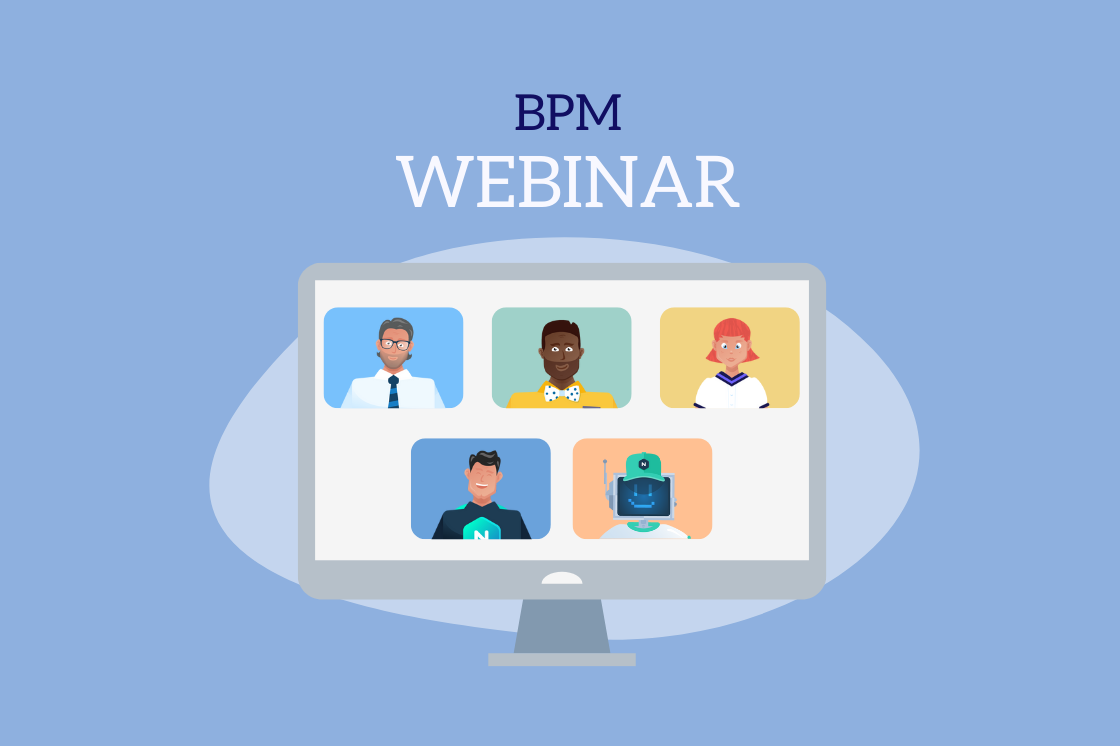Business Process Innovation in a Rapidly Changing Business Environment
You've probably heard the phrase "The Only Constant in Life Is Change."- Heraclitus. It's never been more true. Technology is changing our lives at an ever-increasing rate, and Business Process Management can help companies keep pace.
Business Process Management (BPM) is a set of practices and tools that help an organization discover, model, optimize, manage, improve and automate business processes.
These are critical practices that can help a company continuously innovate when applied as a whole.
The Rapid Pace of Change
Not only is every aspect of our personal and professional lives changing, but it's doing so at an accelerating pace. Let me give you an example.
In 1895 the phonograph ushered in the era of recorded music. Although the format incrementally improved, it remained fundamentally the same for almost 100 years until Sony released the first consumer CD player in 1982.
CD sales overtook records in 1988; that's only six years. Compact Discs held the title for about 34 years until the introduction of the MP3 in December 1991.
By 2014, mp3 digital downloads surpassed CD sales, taking only 15 years.
But that title only took one year to overturn. In 2015, streaming services overtook digital downloads to become the predominant way of consuming music.
You can see that new technology significantly distributed the status quo. Not only was this a technical disruption, but it was also a significant business disruption.
The record labels once had complete control over the creation and distribution of music. The introduction of streaming services and social media has changed that dynamic. Some of the most prominent artists, including Justin Bieber, Shawn Mendes, and Carly Rae Jepsen, got their start on social media. This artist-driven approach sidesteps the traditional method for developing talent and puts more control in the artist's hands.
This rapidly accelerating pace of change exists in every scientific, technological, medical, manufacturing, industrial, and service sector.
If your company isn't keeping pace, you can be sure the competition is.
The Digital Business
One of the ways that businesses are keeping pace is by either digitizing existing processes, products, and services or creating entirely new digital business models.
Sometimes this digital innovation is prompted by disrupters entering the market. Marriott International launched Homes & Villas as a direct response to Air BnB.
The unfortunate few don't keep pace. Blockbuster, for example, was unable to change its business model into a streaming service fast enough to compete with upstart Netflix.
There is another interesting aspect to the Netflix / blockbuster saga. Netflix originally started as a CD rental by mail service. They innovated into a streaming service even though it would cannibalize their rent by mail service. They were not afraid to look at new business model opportunities. That innovation spawned a company with revenues of 29.7 billion USD (2021).
Sometimes factions within a business resist change. They resist the change as it could weaken their position within a company. Kodak invented the digital camera but shelved it. Some Kodak executives couldn't see a world without film and failed to promote their digital cameras.
Business Process Management and Innovation
Successful businesses understand that Business Process Management is an enabler of innovation.
By utilizing the latest BPM tools and methods, these organizations can analyze current execution, discover weaknesses, and uncover opportunities to automate and innovate.
But to be successful, organizations must embrace BPM as a practice instead of simply documenting a process.
Business Process Innovation and BPM
Innovation is the practical application of ideas to drive improvements to goods or services. You are not inventing something entirely new. You are continually making something better.
Uber didn't invent giving people lifts, and Air BnB didn't create renting rental lodging. They developed new processes and applied technology to create an innovative delivery model.
So how does BPM drive innovation?
BPM provides the framework to design, manage and improve your processes. BPM is not a one-time activity but a continuous approach. Key steps include:
- Process Discovery. It may be hard to believe, but many organizations do not have a clear picture of their end-to-end processes. In many cases, work gets done based on the staff's collective knowledge, sometimes in a very inconsistent manner. Process discovery means going out and identifying your current processes, whether you do that manually or with help from process mining technology. Understanding your operations is the first step on the road to innovation. Learn more about process discovery.
- Process Modeling. Just as a building needs blueprints for construction and renovation, a process requires business process modeling for driving improvements. When creating a process for the first time or discovering an existing one, you should document it consistently. The model should show the suppliers, inputs, flow of work, who is responsible for completing the tasks, the data and tools supporting the workflow, and the outputs and customers. Process models should also reference interprocess relationships, metrics, and the controls governing the process. Check out this article on process mapping for more detail.
- Process Management. Processes left on their own will erode over time, resulting in waste and even failure. Process management includes the day-to-day activities required to ensure process execution is consistent, effective, and well governed. Process management responsibilities typically fall upon the Process Owners and the Process Managers. They use the information provided by process metrics and controls to perform their duties.
- Process Optimization and Improvement. This activity is the discipline of reviewing and modifying your processes to improve efficiency and effectiveness or to reduce cycle time or cost. It can also include significant overhauls to your processes, sometimes called process reengineering. When enhancing your processes, it would be best to look at all aspects of the process, including organization, workflow, tools, and technology. Many process improvement techniques exist, including the SIPOC method and value stream mapping.
- Process Automation. Also known as Process Digitization or Digital Transformation, process automation is the use of technology to automate processes to improve service while reducing costs. The key to successful process automation is well-defined processes and precise requirements.
BPM will allow an organization to evolve its processes to meet changing business needs. Learn more about the Benefits of BPM.
Adopting this method will require allocating resources and creating a process management function, sometimes called the Process Management Office.
The Process Management Office is very similar to a Service Management Office (SMO); if you have an SMO, they can potentially assume this responsibility.
Technology is accelerating at an increasing pace, opening the door to new disruptors in your industry sector. Business Process Innovation, supported by a strong BPM discipline, can help you fend off the competition and improve internal processes to improve efficiency and lower cost. 


